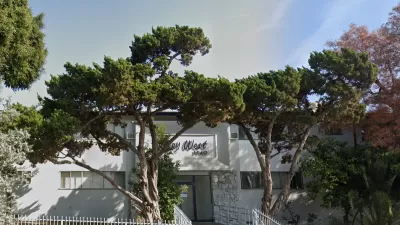Resembling a compartment in a first-class airplane cabin more than a standard hotel room, new pod hotels are popping up in major travel centers in Europe and North America, offering mini-rooms that provide travelers with lower-cost lodgings.
"The shrinking hotel room, especially in the form of the pod hotel, is a growing phenomenon as travellers demand lower-priced rooms with boutique style. The first pod hotel was the Capsule Inn Osaka, designed by Japanese architect Kisho Kurokawa and opened in 1977. With more than a passing resemblance to the drawers in a morgue, it was a weird but nifty addition to Japan's space-starved cityscapes.
The pod hotels are becoming as popular for their cool design solutions to small spaces as for their price tag. Qbic (Qbic. com), a Dutch company, is behind a mini-chain of high-design pod hotels. The first Qbic opened in Amsterdam's financial district in the spring, and two more will open this winter in Antwerp and Maastricht.
At Qbic you get a lot of cool design for your seven-foot-square room and 39 euro rate. Rooms, called Cubis, are a cube-shaped coloured plastic living space with an extra-long bed, Philippe Starck-designed bathroom and all the techie essentials: LCD TV and high-speed Internet in the cube's work and dining area. You can even change the colour of your Cubi to suit your mood: to yellow, red, purple, etc. Check-in is self-service; you get your room key from a dispensing machine. There is a communal space with work station, games console and a Grab & Go corner with vending machines offering pastries from local bakeries. (Anyone who is a fan of Febo, the ubiquitous Dutch fast-food automat, will love these.)"
"In Vancouver and New York, pods aren't just for travellers. MetroNaps (Metronaps.com) has designed pod spaces in the middle of town, set up for a quick cat nap, presumably to tap into the buzz from all those studies touting the benefits of napping. You can check into these for just an hour."
FULL STORY: The Incredible Shrinking Room

Trump Administration Could Effectively End Housing Voucher Program
Federal officials are eyeing major cuts to the Section 8 program that helps millions of low-income households pay rent.

Planetizen Federal Action Tracker
A weekly monitor of how Trump’s orders and actions are impacting planners and planning in America.

Ken Jennings Launches Transit Web Series
The Jeopardy champ wants you to ride public transit.

Crime Continues to Drop on Philly, San Francisco Transit Systems
SEPTA and BART both saw significant declines in violent crime in the first quarter of 2025.

How South LA Green Spaces Power Community Health and Hope
Green spaces like South L.A. Wetlands Park are helping South Los Angeles residents promote healthy lifestyles, build community, and advocate for improvements that reflect local needs in historically underserved neighborhoods.

Sacramento Plans ‘Quick-Build’ Road Safety Projects
The city wants to accelerate small-scale safety improvements that use low-cost equipment to make an impact at dangerous intersections.
Urban Design for Planners 1: Software Tools
This six-course series explores essential urban design concepts using open source software and equips planners with the tools they need to participate fully in the urban design process.
Planning for Universal Design
Learn the tools for implementing Universal Design in planning regulations.
Heyer Gruel & Associates PA
Ada County Highway District
Institute for Housing and Urban Development Studies (IHS)
City of Grandview
Harvard GSD Executive Education
Toledo-Lucas County Plan Commissions
Salt Lake City
NYU Wagner Graduate School of Public Service





























